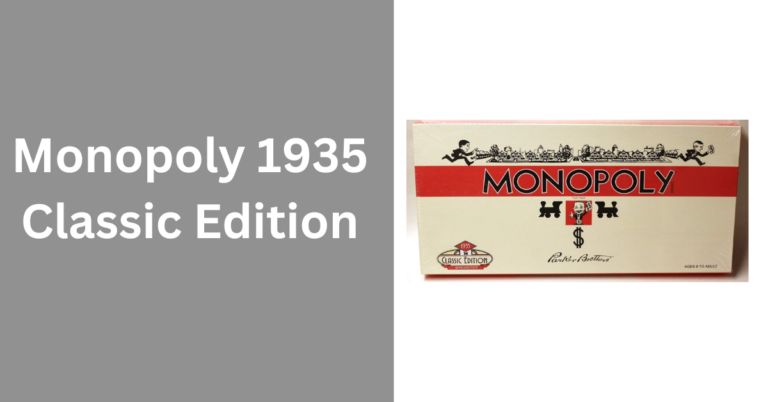15 Most Popular Monopoly like Games in 2024
Monopoly-like games are timeless classics in the realm of board gaming, renowned for their strategic depth and competitive spirit. These games typically revolve around players buying, trading, and developing properties to amass wealth and bankrupt opponents. Rooted in economic strategy, they challenge players to negotiate deals, manage resources, and navigate the unpredictable twists of chance and strategy.
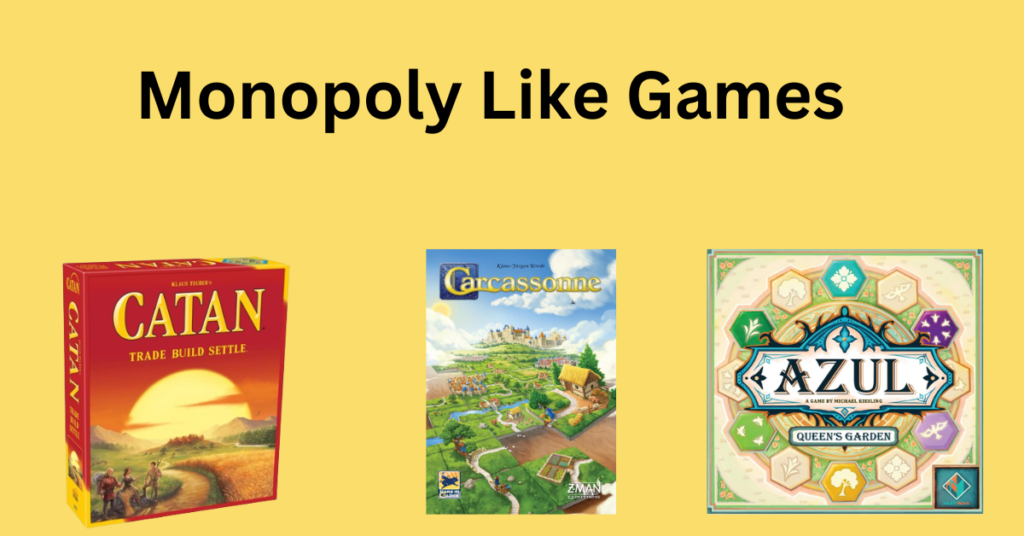
1. Scrabble
Scrabble, a beloved word game, was invented in 1938 by Alfred Mosher Butts, an architect and game designer from New York. Originally named “Lexiko” and later “Criss-Cross Words,” it was rebranded to Scrabble in the 1940s when James Brunot, a game-loving entrepreneur, bought the rights and refined its design.
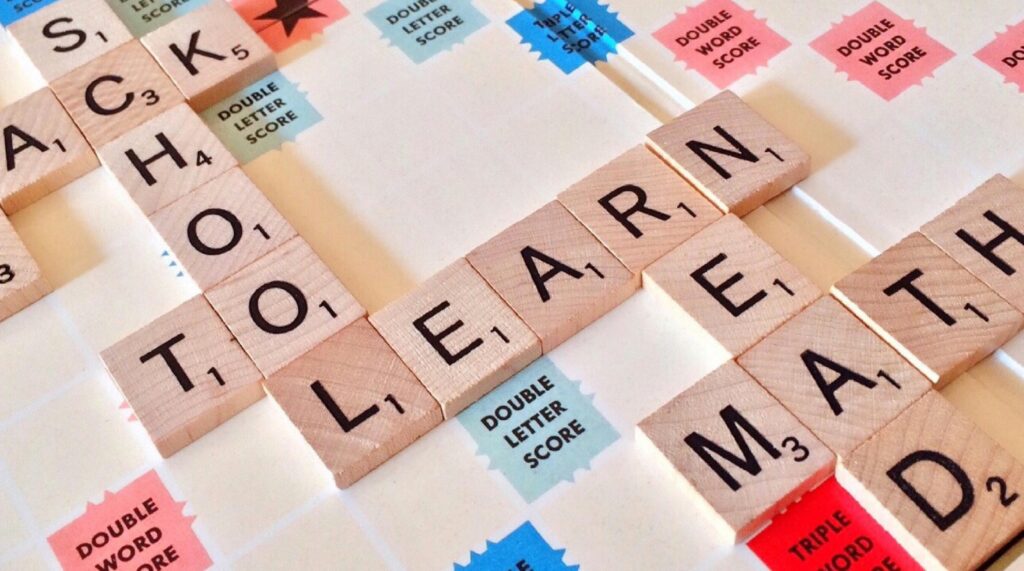
Since then, Scrabble has gained immense popularity worldwide, with official tournaments held in numerous countries and translations in over 30 languages, making it a staple in the gaming community across the globe. The game can be played by two to four players, who use lettered tiles to form words on a 15×15 grid board.
Players draw seven tiles at the beginning and replenish their rack after each turn. Words must connect to those already on the board, and points are awarded based on letter values and premium squares that multiply scores. Strategy and vocabulary prowess are key to success in Scrabble, as players aim to maximize their scores by forming high-value words and blocking opponents’ moves.
2. Catan
Catan, originally known as The Settlers of Catan, is a popular board game invented by Klaus Teuber in 1995. It is published by Catan GmbH, and its popularity has spread across Europe, North America, and many other regions worldwide.

The game has received numerous awards and has been translated into more than 30 languages, making it accessible to players globally. Catan is designed for 3-4 players, although expansions allow for up to 6 players. The game involves players collecting and trading resources like wood, brick, wheat, ore, and sheep to build roads, settlements, and cities.
Players earn points by expanding their territories and achieving various in-game milestones. The first player to reach 10 points wins the game. Catan’s engaging mechanics and strategic depth have made it a timeless favorite.
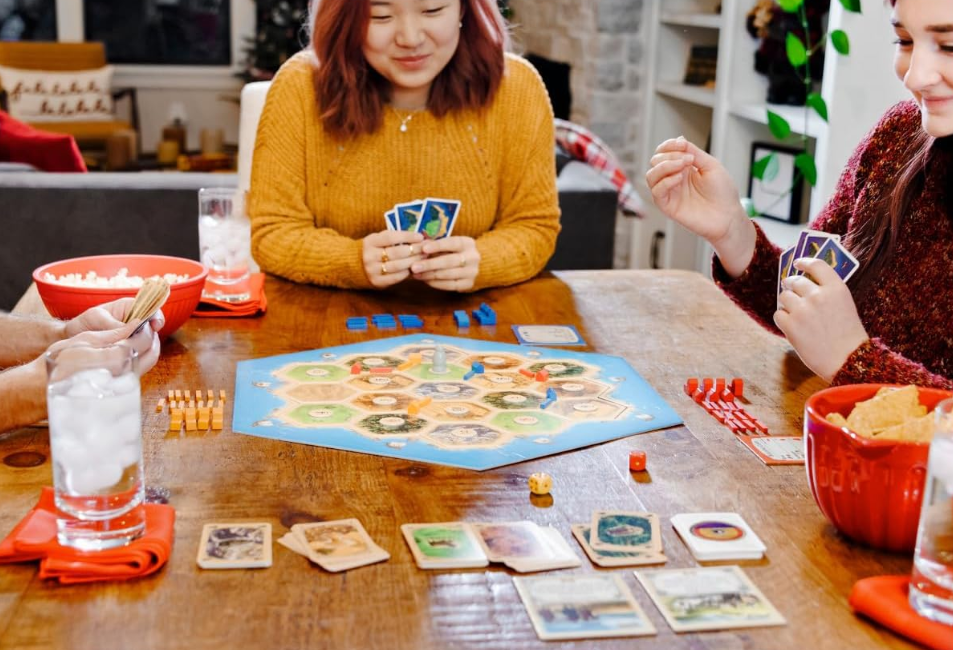
3. Ticket to Ride
Ticket to Ride is a highly acclaimed board game designed by Alan R. Moon and first published in 2004 by Days of Wonder. The game becomes popular early due to its easy rules. Since its release, Ticket to Ride has sold millions of copies and won numerous awards, including the prestigious Spiel des Jahres.
The game is widely played in many countries around the world, including the United States, Germany, and Japan, and has been translated into multiple languages, making it accessible to a global audience. Ticket to Ride is designed for 2-5 players, though certain expansions and versions accommodate different numbers.
In the game, players collect cards of various train types, which they use to claim railway routes on a map. The objective is to complete routes between cities as indicated on destination tickets, earning points for longer routes and successfully completed tickets. Additional points are awarded for the longest continuous path and for fulfilling certain in-game achievements.
4. Acquire
Acquire is a classic board game designed by Sid Sackson and first published in 1962. Known for its strategic depth and economic themes, Acquire has remained a beloved title in the board gaming community for decades. The game simulates corporate mergers and acquisitions, with players acting as investors seeking to amass wealth through shrewd investments.
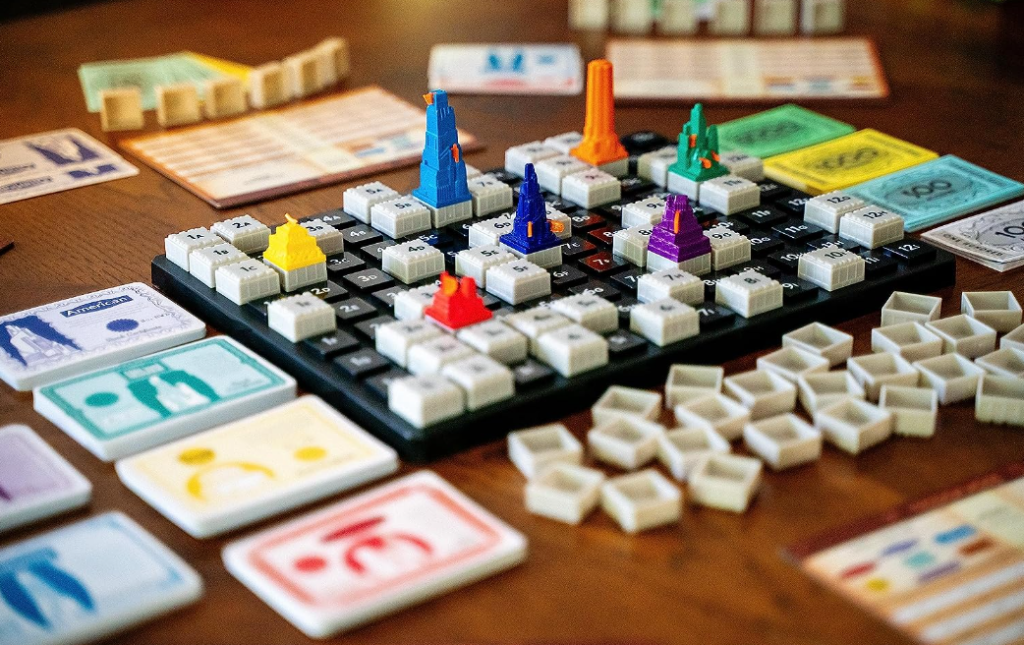
It has been enjoyed in numerous countries, particularly in the United States and various parts of Europe, and has been reprinted several times with updated components and rules to maintain its appeal to modern audiences. The game is designed for 2-6 players, though it is most commonly played with 3-5. Players take turns placing tiles on a grid to form and expand hotel chains, which they can then invest in by purchasing stock.
When chains merge, players holding the majority of stock in the acquired chain receive bonuses, and the goal is to have the highest net worth by the end of the game. Acquire’s blend of tactical tile placement, strategic investment, and competitive play has made it a timeless favorite among fans of economic and strategy games.
5. Pay Day
Pay Day, a popular board game simulating real-life financial situations, was first created by Oink! Exclamation Games in 1985. Played around the world by families and friends, it can be enjoyed by 2 to 4 players and takes roughly an hour to complete. This element of chance and strategy makes Pay Day a fun and engaging game for all ages.
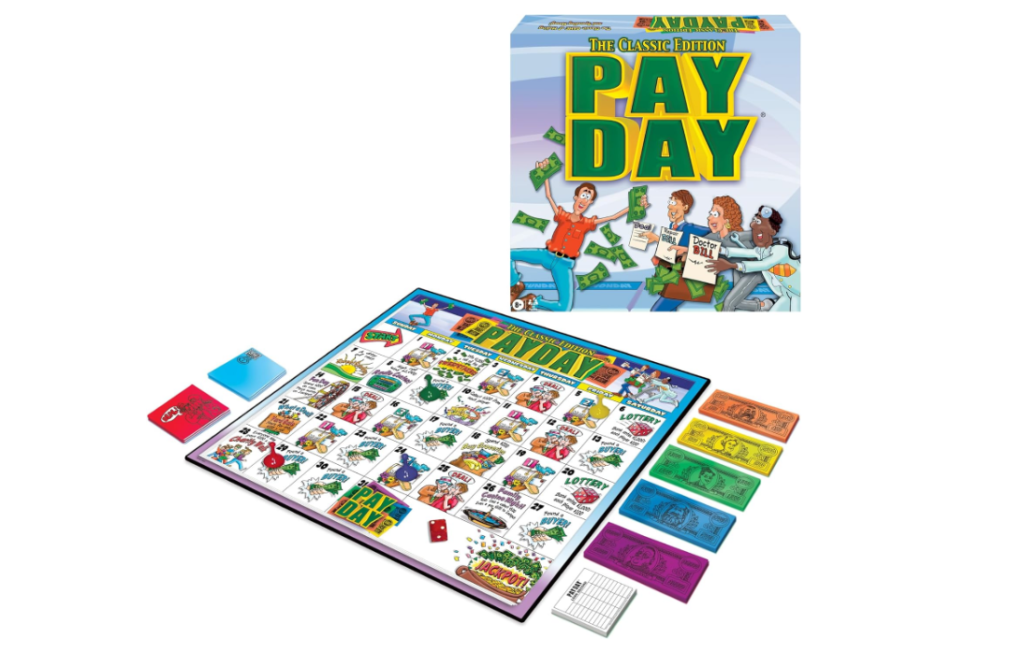
The game centers around the concept of managing your finances throughout a month. Players move around a calendar-themed board, landing on spaces that prompt them to receive a paycheck, pay bills, or encounter unexpected events like winning the lottery or going to the casino. The player with the most money at the end of the final month is declared the winner.
6. Scythe
Scythe is a strategy board game designed by Jamey Stegmaier and first published in 2016 by Stonemaier Games. Set in an alternate-history 1920s Europe, Scythe blends elements of resource management, area control, and strategic combat. The game quickly gained popularity for its rich thematic elements, high-quality components, and deep gameplay mechanics.
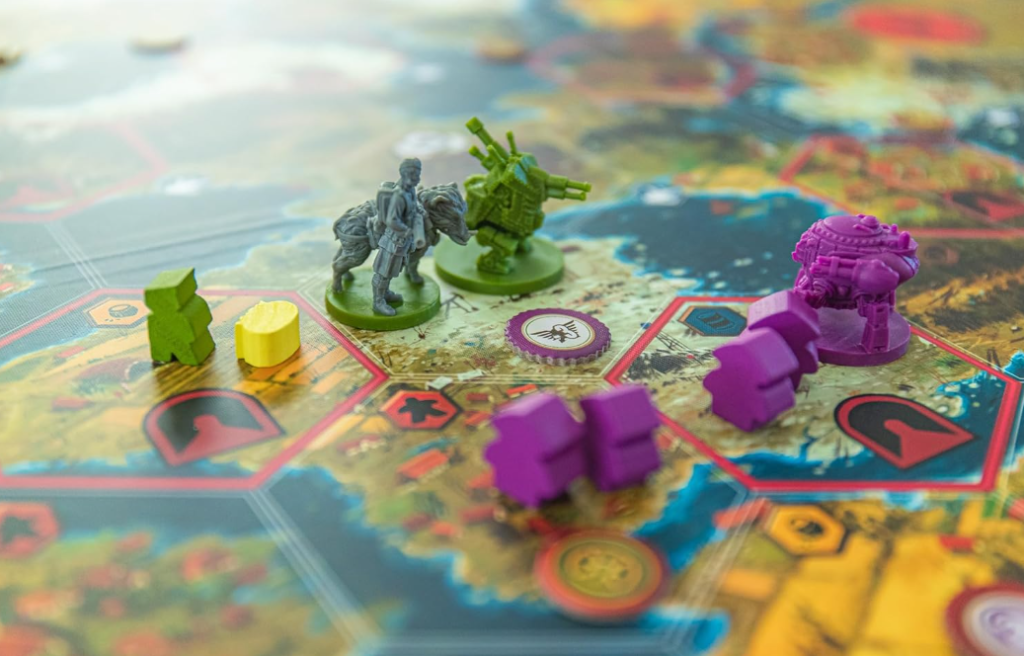
Scythe is played extensively in the United States, Europe, and other parts of the world, where it has garnered a dedicated following among board game enthusiasts. It accommodates 1-7 players, with various expansions and adjustments available to tailor the game experience to different group sizes.
Players control factions competing for control over the land, using unique abilities and resources to expand their territories, build structures, and recruit mechs for both defense and offense. Victory is achieved through a combination of achieving objectives, controlling territory, and accumulating resources. Scythe’s immersive world-building, coupled with its strategic depth and replayability, has made it a standout title in the modern board gaming landscape.
7. Wingspan
Wingspan is designed by Elizabeth Hargrave and published by Stonemaier Games in 2019. Set in the world of birdwatching and ornithology, Wingspan captivates players with its beautifully illustrated bird cards and strategic gameplay. The game quickly gained popularity for its unique theme and accessible mechanics, winning several awards including the prestigious Spiel des Jahres in 2019.

Wingspan is played worldwide, with significant followings in the United States, Europe, and Australia, appealing to both board game enthusiasts and nature lovers alike. It is designed for 1-5 players, each taking on the role of bird enthusiasts seeking to attract the best birds to their wildlife preserves.
Players gather food, lay eggs, and play bird cards to create powerful combinations that score points. Each bird card has unique abilities contributing to players’ strategies, adding depth and variability to each game session. With its engaging gameplay mechanics, educational components, and stunning artwork, Wingspan has become a staple in the board gaming community, celebrated for its thematic integration and strategic depth.
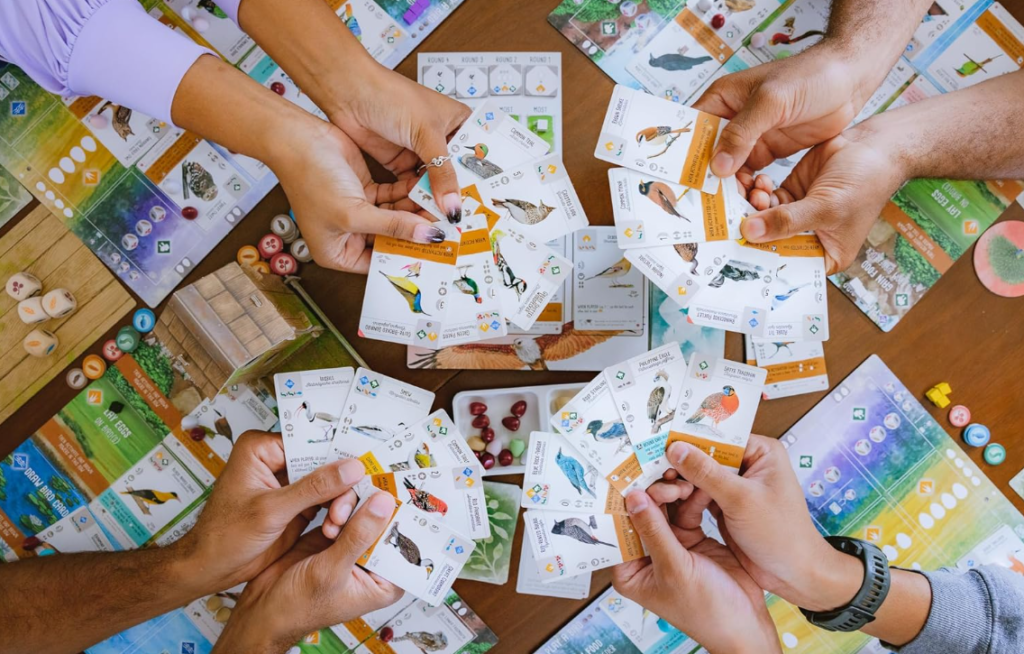
8. Lords of Vegas
Lords of Vegas is a strategic board game designed by James Ernest and Mike Selinker, first published in 2010 by Mayfair Games. Set in the glitzy and competitive world of Las Vegas, the game tasks players with building and managing casinos on the famous Strip. Lords of Vegas has been well-received for its engaging blend of luck, strategy, and negotiation.
It has found a solid fan base in the United States and has also enjoyed popularity in various other countries where board gaming communities thrive. Designed for 2-4 players, Lords of Vegas challenges players to expand their casino empires by acquiring lots, constructing casinos, and vying for control through clever use of dice rolls and strategic planning.
Players earn money and points based on the success and expansion of their casinos, and they can also negotiate and trade with others to optimize their positions. Lords of Vegas combines elements of chance and strategy, making it an exciting and dynamic experience for players looking to test their business acumen in a high-stakes environment.
9. Chinatown
Chinatown is a negotiation and trading board game designed by Karsten Hartwig, first published in 1999 by Alea and later by Z-Man Games. Set in the bustling neighborhood of New York City’s Chinatown in the 1960s, the game immerses players in the role of ambitious business owners seeking to establish and expand their businesses through savvy deals and strategic planning.
Chinatown has gained a loyal following, especially in Europe and North America, due to its emphasis on player interaction and deal-making. Designed for 3-5 players, Chinatown challenges participants to acquire and develop properties by negotiating with others to maximize their profits. Each round, players draw property and business tiles, then engage in open-ended negotiations to trade properties, money, and businesses.
The goal is to create contiguous businesses to increase income, with the player amassing the most money by the end of six rounds declared the winner. The game’s focus on player-driven deals and strategic trading makes Chinatown a dynamic and engaging experience, highlighting the importance of negotiation skills and strategic foresight.
10. Power Grid
Power Grid is a highly strategic board game designed by Friedemann Friese and first published in 2004 by Rio Grande Games. Known as “Funkenschlag” in its original German edition, the game has become a favorite among strategy enthusiasts worldwide. Power Grid has received acclaim for its intricate economic mechanics and depth of gameplay, and it enjoys a strong following in countries such as the United States, Germany, and other parts of Europe.

Power Grid’s detailed and thoughtful design has earned it numerous awards and a lasting place in the board gaming community. It is designed for 2-6 players, each taking on the role of an energy company owner striving to supply the most cities with power. Players bid on power plants, purchase resources like coal, oil, garbage, and uranium, and build a network of cities to expand their reach.
The game is played over several rounds, with players balancing resource management, network expansion, and competitive bidding to optimize their strategies. The player who can power the most cities by the end of the game wins. Power Grid’s blend of economic planning, resource management, and strategic expansion offers a challenging and rewarding experience for dedicated board gamers.
11. Carcassonne
Carcassonne is a beloved tile-placement board game designed by Klaus-Jürgen Wrede and first published in 2000 by Hans im Glück in Germany. The game is named after the medieval fortified town of Carcassonne in southern France, and its theme reflects the landscape of the region.
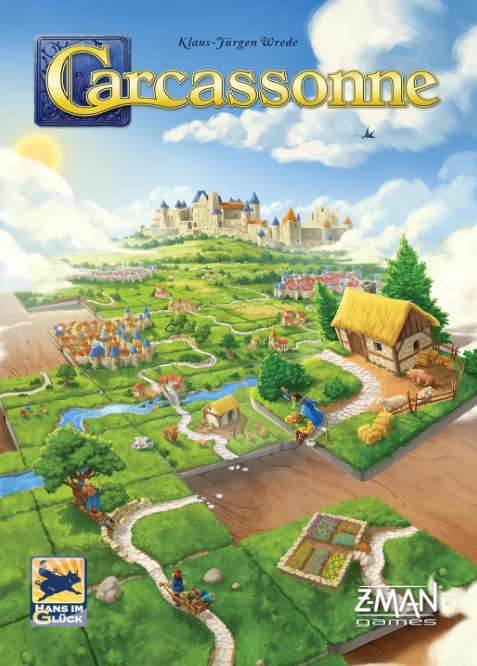
Carcassonne quickly gained popularity for its simple yet strategic gameplay and has since become a staple in board game collections around the world. It has won several prestigious awards, including the Spiel des Jahres in 2001, and is widely played in Europe, North America, and beyond.
Carcassonne is designed for 2-5 players, with expansions available to accommodate more players and add variety to the game. Players take turns drawing and placing tiles to build cities, roads, monasteries, and fields. Each tile placement can expand the shared landscape and offer opportunities to place meeples, which are used to claim features and score points. The player with the most points wins.
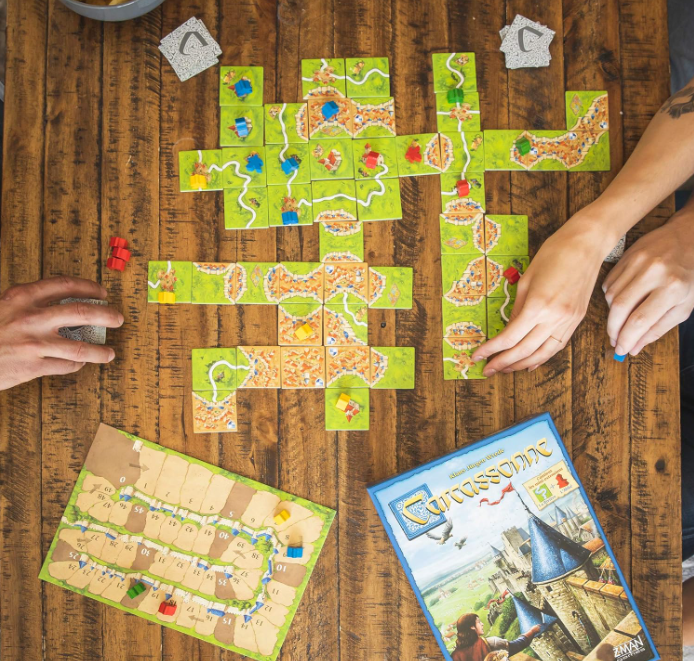
12. Blank State
“Blank State” is a fictional board game, hence no specific history or year of invention applies. For this summary, let’s imagine “Blank State” as a recently developed strategy board game designed to encourage creativity and strategic thinking. Released in 2022, it has quickly gained traction among board game enthusiasts in countries like the United States, Germany, and Japan.
The game is praised for its innovative mechanics and the flexibility it offers players in shaping the game’s narrative and objectives, leading to widespread international appeal. It is designed for 2-6 players, Blank State allows each participant to start with a blank board and gradually build their world through a series of strategic decisions and resource management. Players take turns drawing and placing tiles or cards that represent various terrains, structures, and resources.
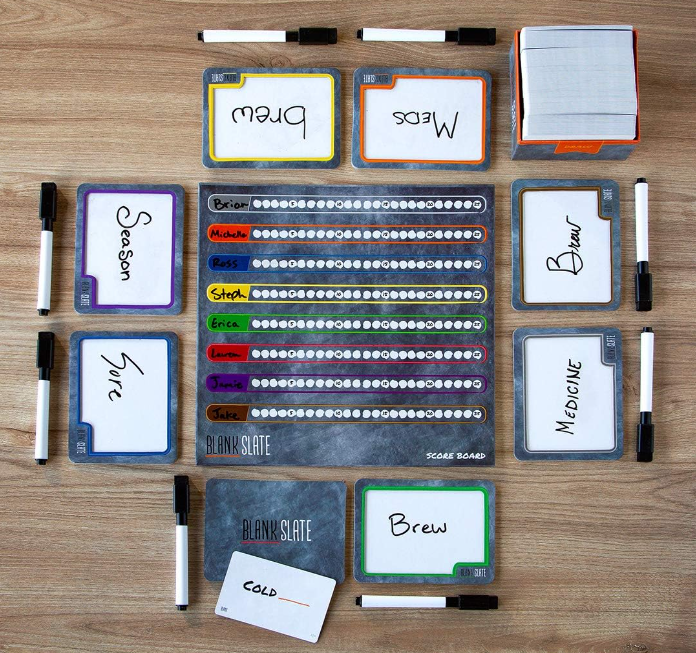
The goal is to create the most prosperous and balanced ecosystem, earning points based on the harmony and efficiency of their world. The game ends after a set number of rounds, with the player having the highest score declared the winner. Blank State’s unique approach to open-ended gameplay and strategic depth makes it a compelling choice for those who enjoy creativity and competition in board games.
13. Clue
Clue, known as Cluedo outside North America, is a classic detective-themed board game that was invented in 1943 by Anthony E. Pratt, a British musician and factory worker. The game was first published by Waddingtons in the United Kingdom in 1949 and by Parker Brothers in the United States in the same year.
Clue has since become a staple in households around the world, with significant popularity in countries like the United States, Canada, the United Kingdom, and Australia. Its enduring appeal lies in its engaging murder mystery theme and the deductive reasoning required to solve the case.
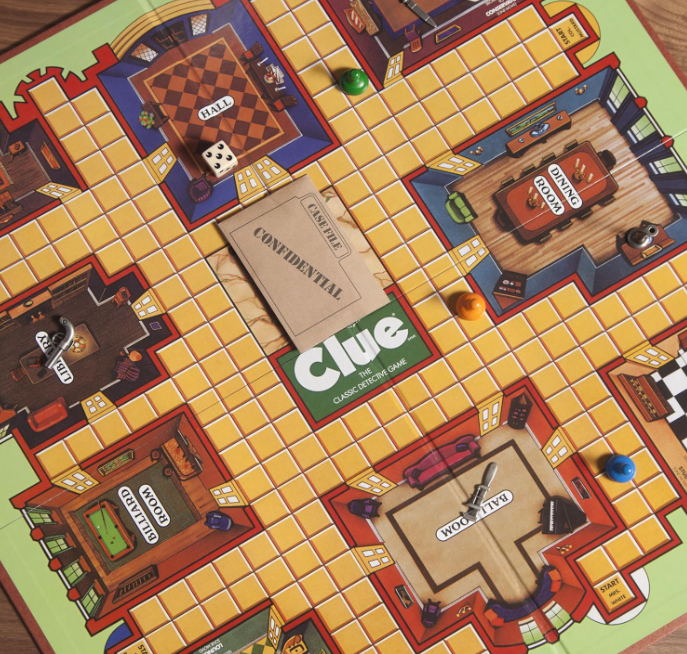
Designed for 3-6 players, Clue tasks participants with uncovering the details of a murder in a mansion by deducing the suspect, weapon, and room where the crime occurred. Players move around the board, which represents the rooms of the mansion, collecting clues through a process of elimination. Each player has a unique character, and they must ask strategic questions to narrow down the possibilities.
The game ends when a player correctly identifies the three elements of the mystery and makes an accurate accusation. Clue’s combination of suspense, strategy, and deduction has made it a beloved game for generations, fostering critical thinking and interactive play.
14. Azul
Azul is a visually stunning tile-placement game designed by Michael Kiesling and first published in 2017 by Plan B Games. Inspired by the beautiful azulejos, the ceramic tiles used to decorate Portuguese palaces, Azul quickly garnered critical acclaim for its elegant design and engaging gameplay. The game has won several prestigious awards, including the Spiel des Jahres in 2018.
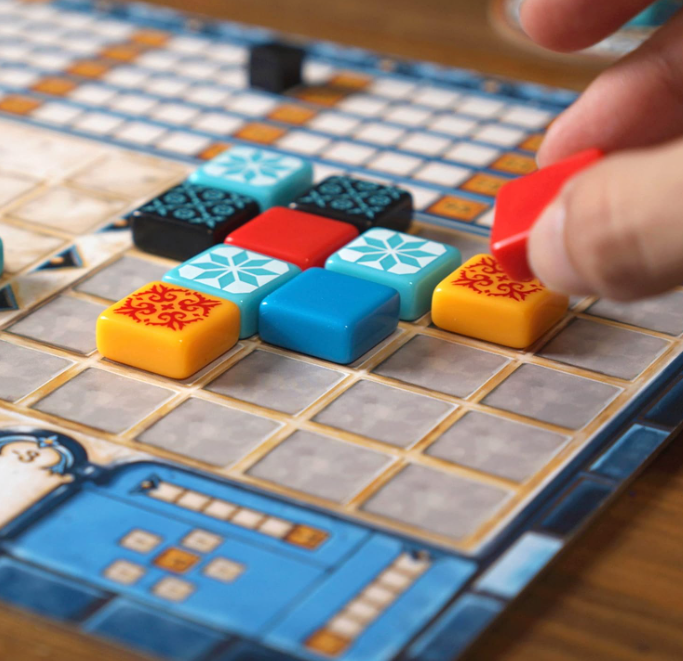
Azul is played worldwide, particularly in countries such as the United States, Germany, Canada, and Portugal. Its simplicity and strategic depth blend has made it a favorite among casual and experienced gamers. It is designed for 2-4 players. Azul involves drafting colorful tiles from a central pool to complete patterns on their personal player boards. Players score points based on how well they complete rows, columns, and specific patterns while also considering the penalties for leftover tiles.
The game requires players to plan their moves carefully and adapt their strategies based on the available tiles and their opponents’ actions. The game ends after a set number of rounds, with the player having the highest score declared the winner. Azul’s combination of aesthetic appeal, strategic planning, and accessible rules makes it a standout in modern board gaming.
15. Yahtzee
Yahtzee was invented by a Canadian couple in the early 1950s. The game was initially created as a pastime for playing on their yacht, hence the name “Yahtzee.” In 1956, the couple approached Edwin S. Lowe, a toy and game entrepreneur, who bought the rights to the game and introduced it to the mass market.
Since then, Yahtzee has become a beloved game worldwide, particularly popular in the United States, Canada, the United Kingdom, and Australia. Its combination of luck and strategy has made it a staple in family game collections and competitive play alike.
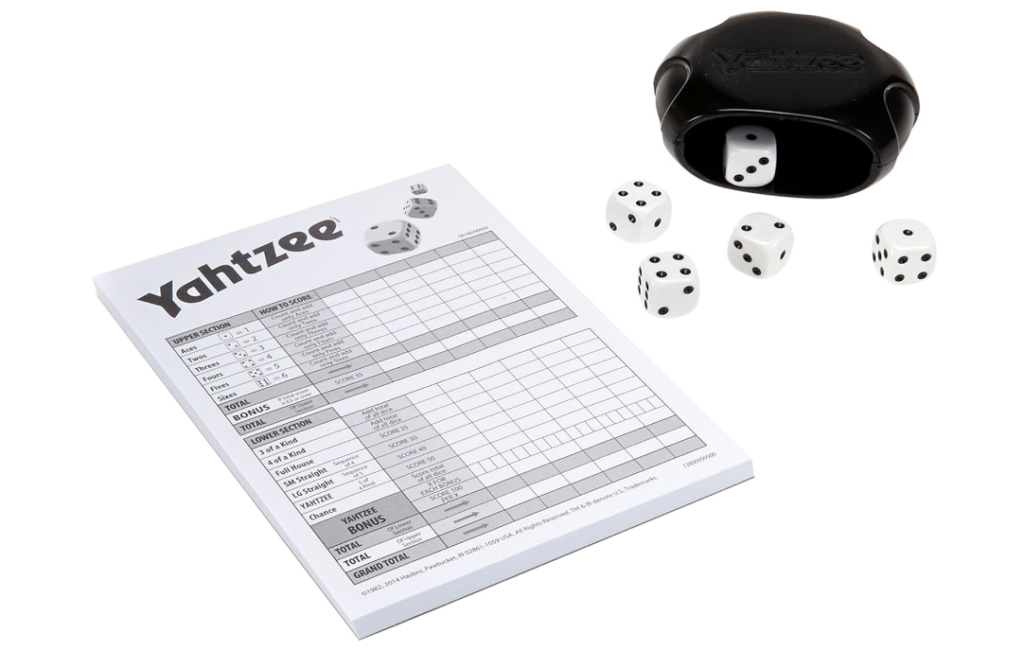
It is designed for any number of players, typically ranging from 2 to 10, making it versatile for both small and large groups. Players take turns rolling five dice up to three times per turn, aiming to achieve specific combinations that score points based on a predefined scorecard.
FAQs
What are some popular Monopoly-like games?
Popular Monopoly-like games include “The Game of Life,” “Pay Day,” “Acquire,” and “Hotel Tycoon.” These games also involve financial strategy, property acquisition, and player competition.
How long does it typically take to play Monopoly-like games?
The playtime for Monopoly-like games varies, but most can take anywhere from 1 to 3 hours, depending on the number of players and the specific game. Some games, like “The Game of Life,” may be shorter, while others, like “Acquire,” may take longer.
Can Monopoly-like games be played with fewer than four players?
Yes, many Monopoly-like games are designed for 2-6 players. Games like “Pay Day” and “Acquire” can be enjoyed with as few as two players, while others may be more engaging with a larger group.
Conclusion
Monopoly-like games offer a blend of strategy, luck, and financial management that can provide hours of entertainment for players of all ages. These games not only challenge players to make smart investments and negotiate deals but also encourage critical thinking and strategic planning.




